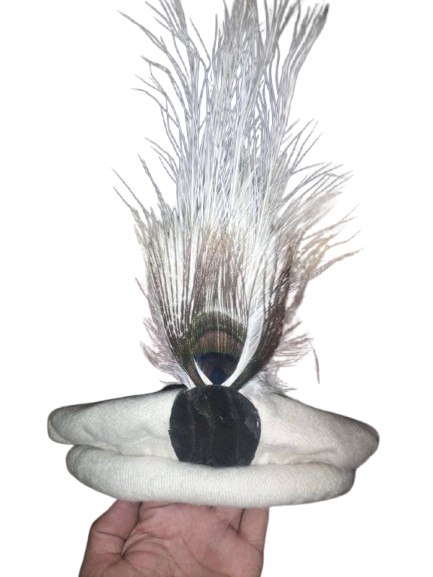The traditional caps of Hunza and Gilgit-Baltistan, often referred to as Pharchin or Khoi, hold a prominent place in the cultural identity of the region. Among the most striking features of these caps is the feather or plume, usually a peacock feather, delicately attached to the front or side of the cap. This plume adds an exquisite elegance, transforming the simple woolen cap into a symbol of pride, tradition, and heritage.
Symbolism and Significance of the Plume
The feather on the Gilgit-Baltistan cap is more than just an ornamental feature. It holds deep cultural and historical significance. Traditionally, the plume is considered a ceremonial accessory, often worn during weddings and formal gatherings. Grooms, in particular, don the cap with the feather as part of their wedding attire, symbolizing honor and festivity.
Interestingly, the phrase “a feather in your cap,” commonly used to signify an achievement or honor, has roots in old customs practiced by warrior tribes. In these traditions, warriors would add a feather to their caps for every enemy they defeated in battle. Similarly, hunters were awarded feathers from the birds they hunted as a mark of their prowess. Such customs were prevalent among North American indigenous people, Mongols, Turcomans, Austrians, Scottish, and Hungarians, many of whom traveled to regions like Hunza for hunting or leisure. The feather on the Gilgiti cap likely draws inspiration from these ancient practices, symbolizing bravery and accomplishment.
Modern Adaptations and Ethical Practices
In the modern era, the practice of using real peacock feathers or other bird plumes has come under ethical scrutiny due to concerns about wildlife conservation. Today, synthetic materials are often used to create the plumes, preserving the aesthetic appeal while protecting bird species. This shift mirrors global efforts to balance cultural preservation with environmental responsibility, much like the synthetic bearskin hats used by the royal guards of Buckingham Palace.
Cultural Expressions with the Cap
Beyond feathers, the caps of Hunza and Gilgit-Baltistan are adorned in various ways to express cultural sentiments. In many regions, people insert fresh flowers into their caps, symbolizing freshness, life, and the beauty of nature. During the spring season, shepherds and farmers might tuck pine leaves into their caps to signify renewal and vitality.
Another fascinating tradition involves placing money into the cap during dances. This practice is a gesture of love and respect from the audience to the dancer. After the performance, the dancer typically gives this money to the musicians, fostering a sense of community and appreciation for the arts.
Practical Uses of the Cap
While the cap holds ceremonial importance, it also serves practical purposes in daily life. Many men use their caps as small storage sacks, keeping essential items like needles, threads, nails, or even cigarettes tucked inside. For shepherds and farmers, the cap becomes a handy tool, reflecting the resourcefulness ingrained in the culture of Gilgit-Baltistan.
The Balti Cap: A Regional Variation
In Baltistan, a slightly different version of the cap, known as Nating, is worn. This woolen cap is semi-spherical and typically found in brown, gray, or white colors, with white being the most popular. Presenting a Nating cap to guests is a mark of high honor and hospitality, showcasing the deep-rooted traditions of the Balti people.
Preserving Heritage: Gilgit-Baltistan Cap Day
Recognizing the cultural significance of the traditional cap, the government of Gilgit-Baltistan has designated May 10 as “Gilgit-Baltistan Cap Day.” This annual observance celebrates the region’s rich heritage, encouraging both locals and visitors to appreciate and wear the traditional cap. The event also boosts the local economy, as artisans and traders experience increased demand for their handmade caps.
The feather or plume on the Hunza and Gilgit-Baltistan cap is more than just a decorative element; it embodies the history, culture, and identity of the people. Whether worn at weddings, festivals, or as a daily accessory, the cap, adorned with its elegant plume, remains a powerful symbol of pride and tradition in Gilgit-Baltistan. Through ethical adaptations and continued cultural celebrations, this iconic headwear continues to thrive, connecting past traditions with the present and future.

